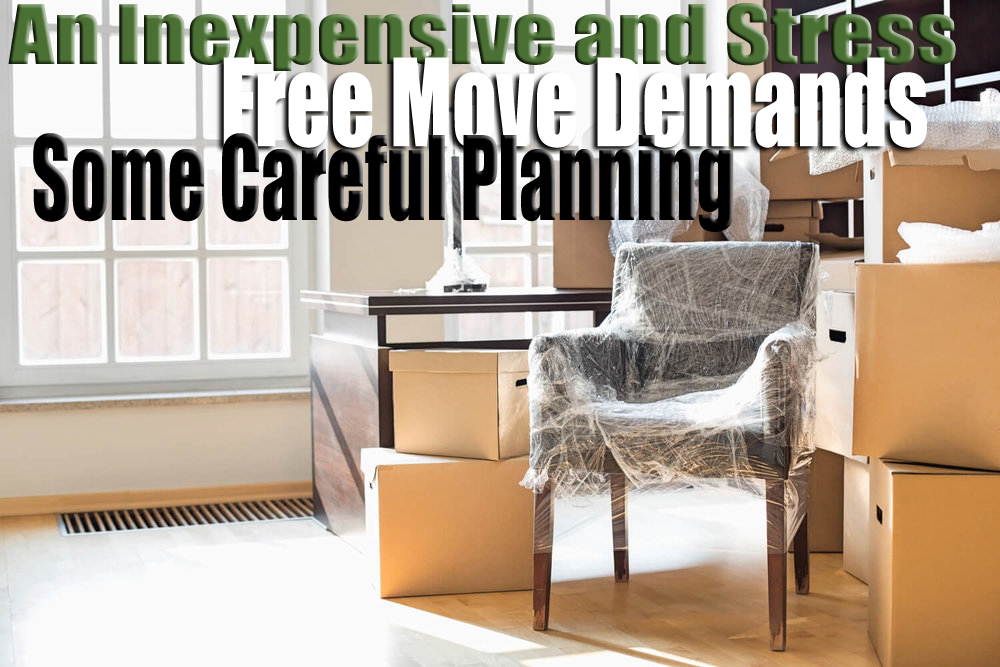Moving from one home to another can be something of a mixed bag. On one hand, very few people move on a whim. If someone’s about to move, then they’ll typically have some good things lined up for the future. But the journey to that final destination can be another thing entirely.
Moving is often both stressful and expensive. Worse, people can end up ill-prepared for their new life thanks to a combination of both of these elements. But there is one tool which can make a move both inexpensive and stress-free. That tool is a “move budget.”
The basics of your move budget
Putting a label on things can make them seem far more complex than they actually are. And this is quite true for move budgets. They’re really just a list of general expenses for your move. It’s actually easier to work with than a standard budget due to the shorter timeframe. You only need to account for expenses incurred shortly before, during and after your move.
Building a move budget on top of moving estimates
A move budget has one very basic prerequisite. Moving companies are the catalyst which makes the whole process possible. All you need to do is find the best combination of value and reliability for your movers. Do that right and you’ll have some solid progress on your move budget.
There’s no single method by which one can find the perfect moving company. But there are some traits important enough to consider basic prerequisites. First, you’ll want to ensure the service offers a free in-home estimate. And, of course, the actual estimate should match up to your needs.
North American Van Lines is a solid example of an affordable moving company. Not just because it offers an in-home estimate, but also because they list the option so prominently. This is a sign that they want to ensure customers are happy and satisfied with the experience. It also gives you some solid numbers to work with for your move budget.
Prepare before the estimate
Before you actually ask for an in-home estimate, you should go over everything you own. We all end up with possessions which are kept more from habit than need or desire. When in doubt, really look at the object and consider getting rid of it. Watch for your overall mood when considering it as an option. You might well be surprised to find just how often those thoughts lead to a sense of freedom or relief. Uncluttering your life before a move accomplishes a few different things.
First, the less items you need to move the lower the cost. This is also why you want to cover this step before getting an estimate. Secondly, you’ll often be able to sell unwanted items.
Every item you move is essentially a hit to your bank account. But getting rid of items isn’t “just removing that expense.” It’s turning a negative value into a positive one. Even a small profit is significant when considering the fact that it started out as a loss.
Plan for the other end of the journey
You’ll also want to consider just how long the move will take. A cross-country move can leave one without the normal comforts of home for days or possibly even a week or more. You’ll want to consider just how much it will cost to keep yourself comfortable until the movers arrive with your possessions.
You’ll probably want to purchase some essentials. For example, something to sit on or sleep on is a must. But don’t make the mistake of assuming you need to buy expensive furniture. Something comfortable, easily stored, light and inexpensive, like a bean bag chair, is a better choice. When your real furniture arrives you’ll be able to easily store the bean bag chair or repurpose it elsewhere in the house.
And instead of buying a new mattress, you can go with an air mattress on the floor. Toss a solid blanket on top of it and it can become surprisingly comfortable. Talley up the values of anything you think you’ll need while waiting for your furniture and add that to your budget as well.
Different living expenses
Finally, consider some of the basic aspects of life in your new home. The cost of regional lifestyles can be counter-intuitive. For example, city life is often cheaper than the suburbs. You can use a variety of online maps and resources to check out nearby restaurants and stores.
Total up the general amount you see yourself spending while waiting for your kitchen supplies to arrive. And with that, you now have a move budget which should save you quite a bit of money.


